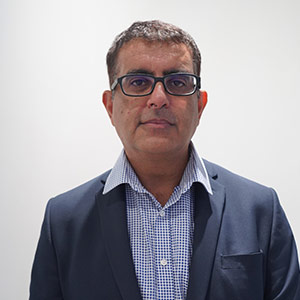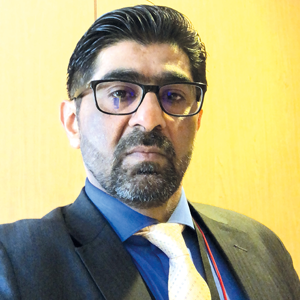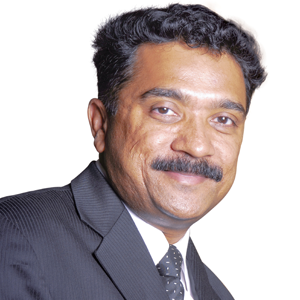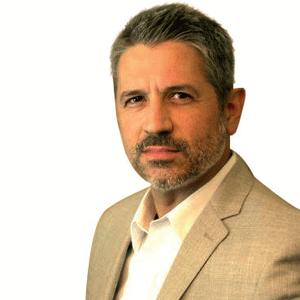THANK YOU FOR SUBSCRIBING

Challenges in the role Of a global and multimarket it executive
Ygor Silva Cezar, Head Of It, Oec And Ronaldo Andrade, Head Of Business Technology And Ciso, Horiens Risk Advisor


Ygor Silva Cezar, Head Of It, Oec And Ronaldo Andrade, Head Of Business Technology And Ciso, Horiens Risk Advisor
The role of the IT Executive (CIO, Head of IT, IT Manager, and other related business titles) has always been critical in an organization's success, and in today's globalized economy, it has become even more challenging. The modern CIO must navigate the complexities of the business while ensuring that their organization's technological infrastructure remains secure, efficient, and cost-effective.
We are part of the IT team of Novonor, a Brazilian business group with over 75 years of experience with companies in sectors like engineering, infrastructure, construction, petrochemical, sugar and energy, insurance, real estate, oil and gas and mobility and operation in 20 countries and over 35,000 employees. As a CIO in the engineering and construction industry, the challenges of managing a multi-market and multi-country company can be overwhelming. The industry has unique demands and complexities that require the CIO to have a deep understanding of the business operations, technology infrastructure, and regulatory requirements in each market and country. In this article, we will explore the challenges that we face at OEC and Horiens (companies of the Novonor group) and discuss strategies to overcome them.
• Managing Technology in Diverse Geographies
The engineering and construction industry operates in a diverse geographic footprint, with projects and operations spread across different regions and countries. This diversity requires us to ensure that the technology infrastructure is available and functioning correctly in all locations. We collaborate closely with the local teams to ensure that the technology infrastructure is tailored to meet each location's unique requirements, while also ensuring that it is consistent and standardized across all locations.
One of the major difficulties is the lack of uniformity in infrastructure and connectivity as you can be operating at the same time in a major US airport and developing an oil refinery in the Angolan countryside. So, it is necessary to develop a technology strategy that considers the unique needs and requirements of each location and create a plan for standardizing and centralizing technology infrastructure where possible.
Here at OEC, we have developed an infrastructure guideline that establishes the global vendors, technologies and standards that must be followed by any new project being structured. This helps in the mobilization phase as we already have the knowledge to operate the technology stack but also facilitates vendor procurement.
• Ensuring Data Security and Compliance
Multi-market and multi-country companies face significant challenges in ensuring data security and compliance. Different countries have different laws and regulations regarding data privacy, and the CIO must ensure that the organization complies with these regulations. Failure to comply with these regulations can result in significant fines, legal penalties, and damage to the organization's reputation. The engineering and construction industry is particularly heavy in regulations, and the CIO must ensure that the technology infrastructure is compliant with the regulatory requirements in each market and country.
The CIO must ensure that the organization has robust data security measures in place to protect against cyber threats, data breaches, and other security risks. This requires implementing strong encryption, access controls, cyber insurance, and other security measures to ensure that sensitive data is always protected. At the same time, it is necessary to guarantee that the other two factors of the security equation (people and processes) are also prepared and up to date, so a strong and inclusive security awareness program is a must, not forgetting to also embrace the supply chain, which tends to be huge in the E&C industry.
The Infrastructure Must Be Sustainable In A Way That Not Only The Selected Technology Stack Fits The Initial Purchase Cost But Also That It Allows The Operations To Keep The Active Support For As Long As Possible, So Choosing The Right Partners Is A Key Decision, Always Seeking For The Long-Term Relationship
• Maintaining Cost-Effectiveness
Finally, the modern CIO must ensure that the organization's technological infrastructure is cost-effective. Multi-market and multi-country companies often have complex technological infrastructures that can be expensive to maintain and upgrade. The CIO must ensure that the organization's technological infrastructure is optimized to reduce costs while also ensuring that it meets the organization's needs.
At last, the infrastructure must be sustainable in a way that not only the selected technology stack fits the initial purchase cost but also that it allows the operations to keep the active support for as long as possible, so choosing the right partners is a key decision, always seeking for the long-term relationship.
The IT role has been shifting a lot in the last years, taking a more strategic position, and also a seat in the board meetings, as every company now is an IT company. So, the IT executive has also to evolve, not only because its role is no longer only a technical role but a business role, and this is even critical in a multi-market and multi-country organization. A formidable team, strategic partners network and good proximity with the business are the key factors to succeed.












